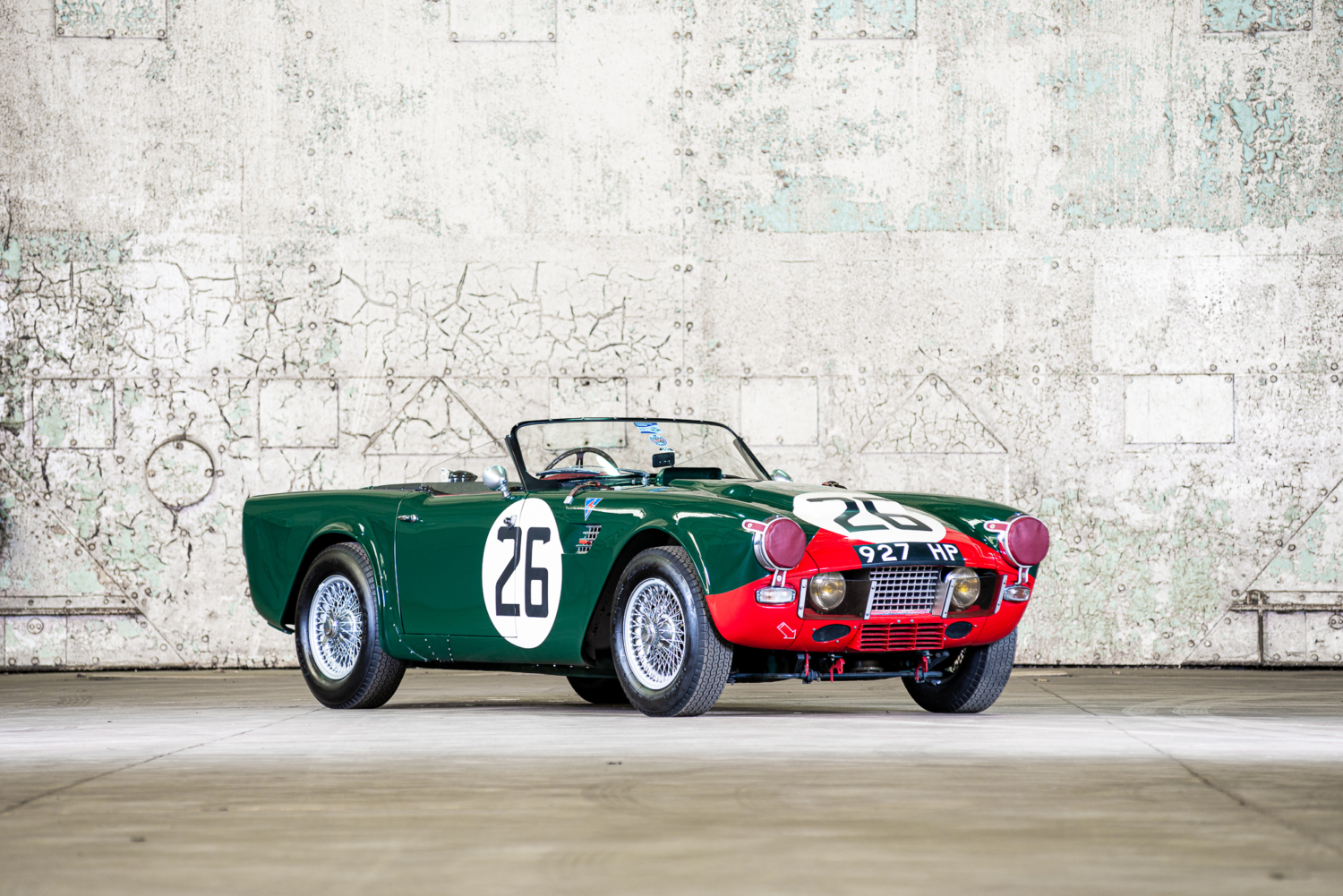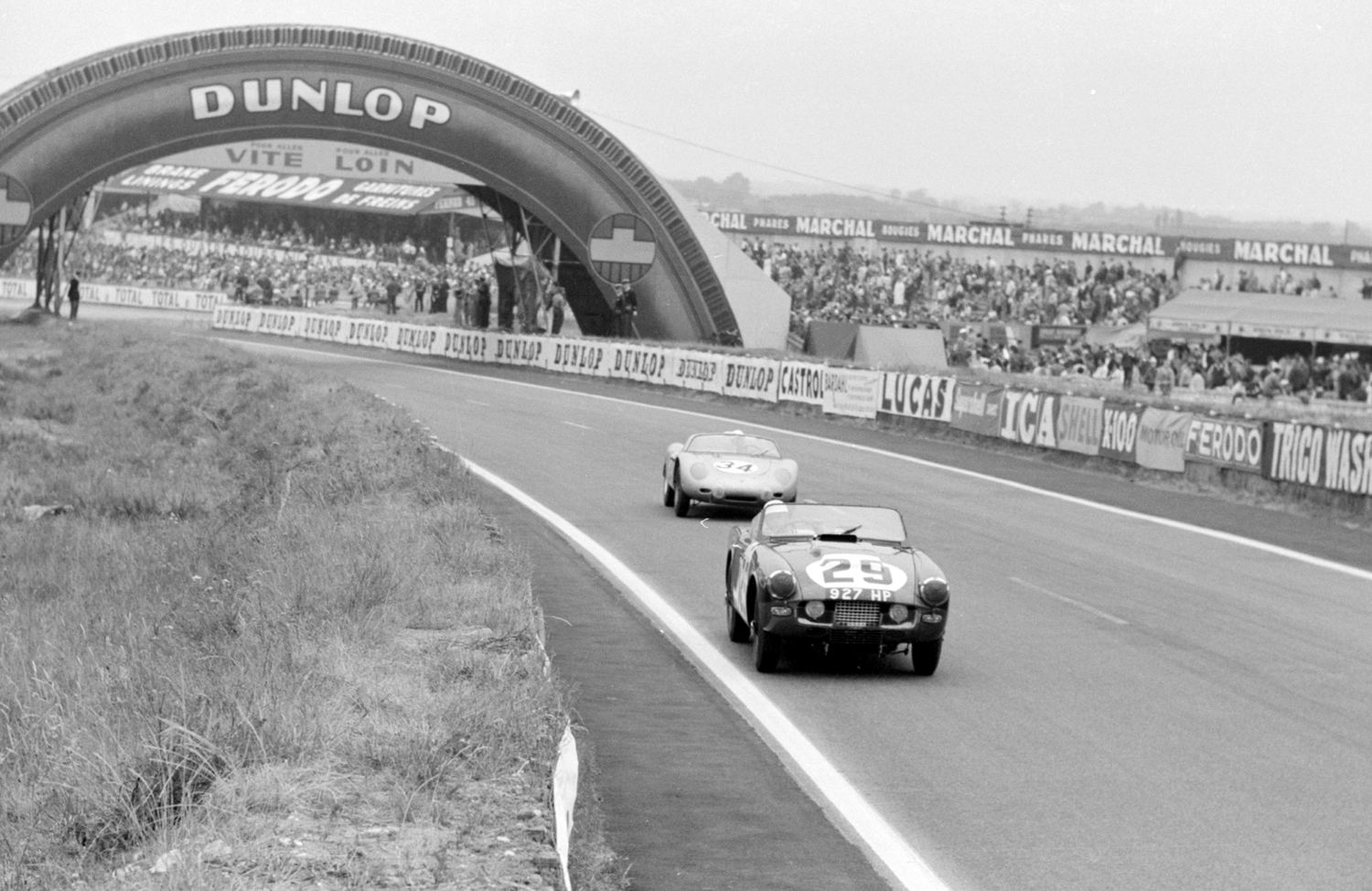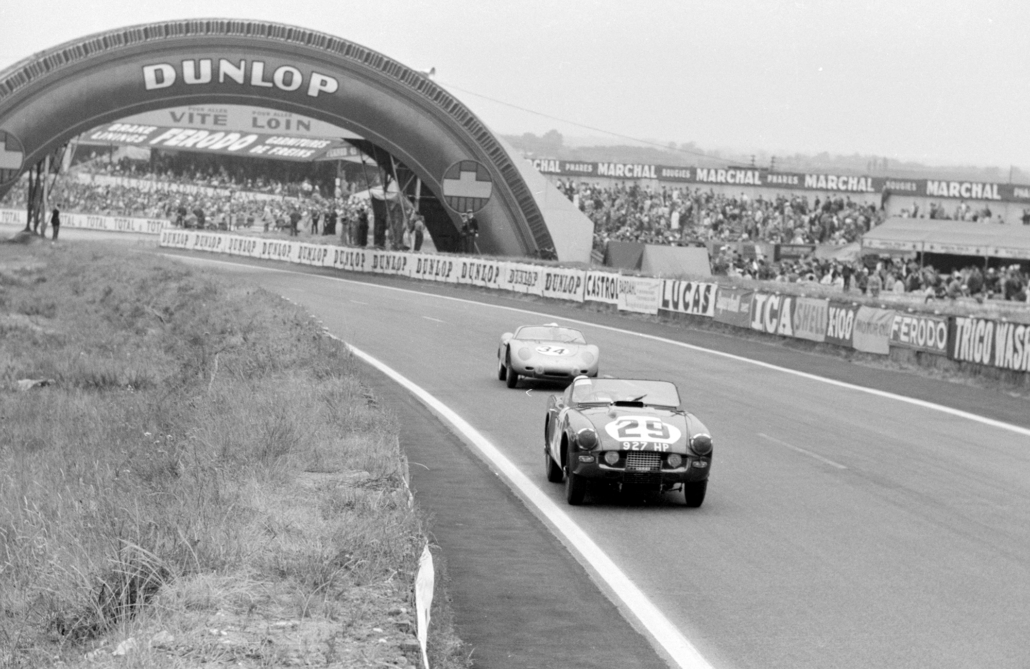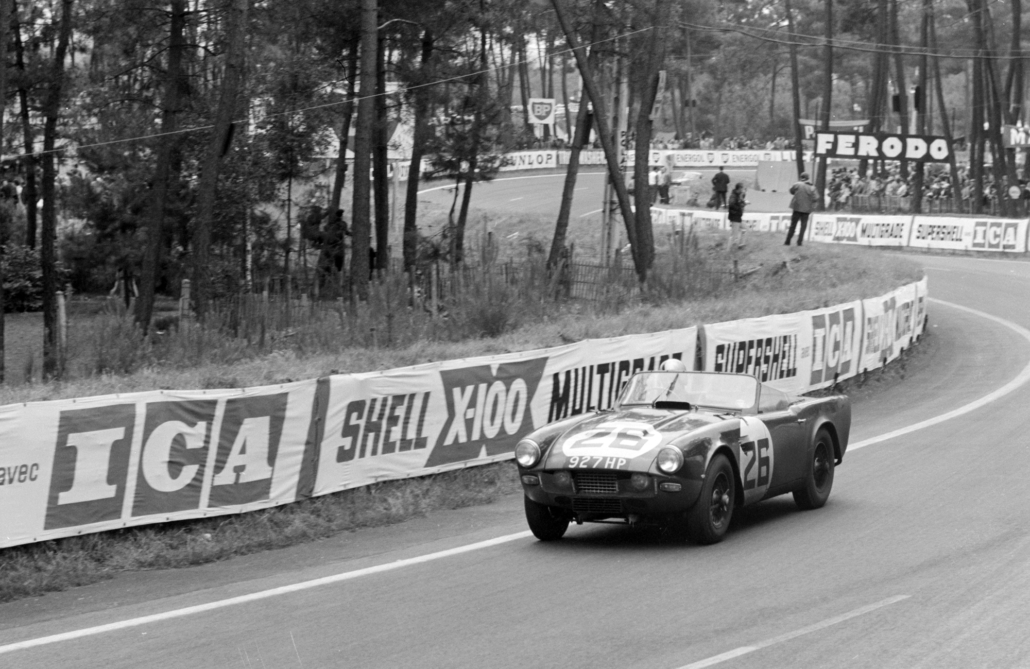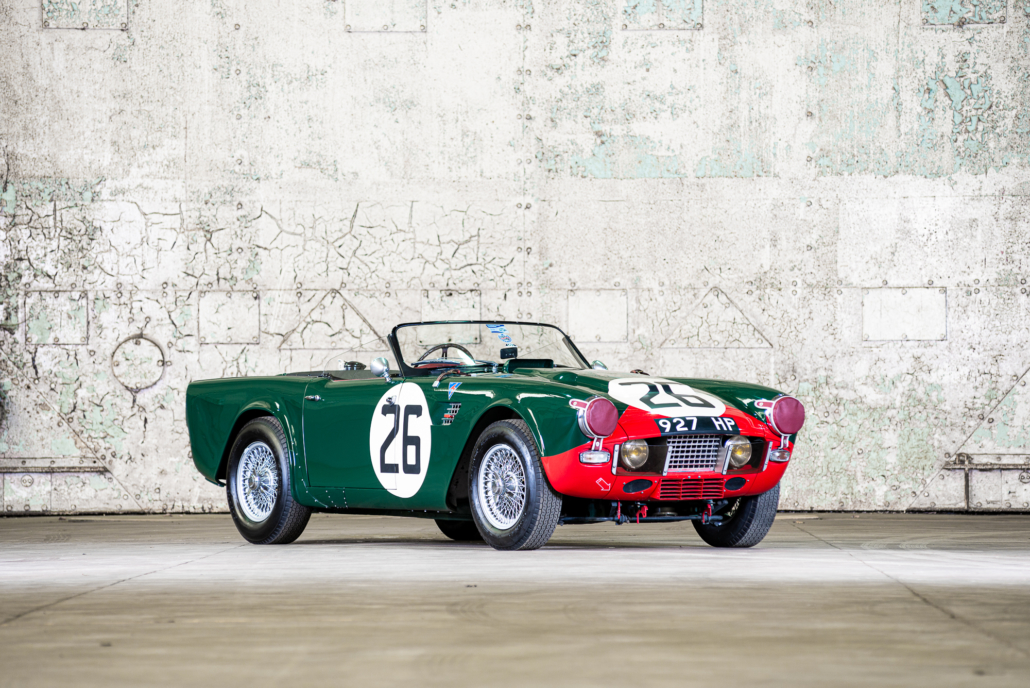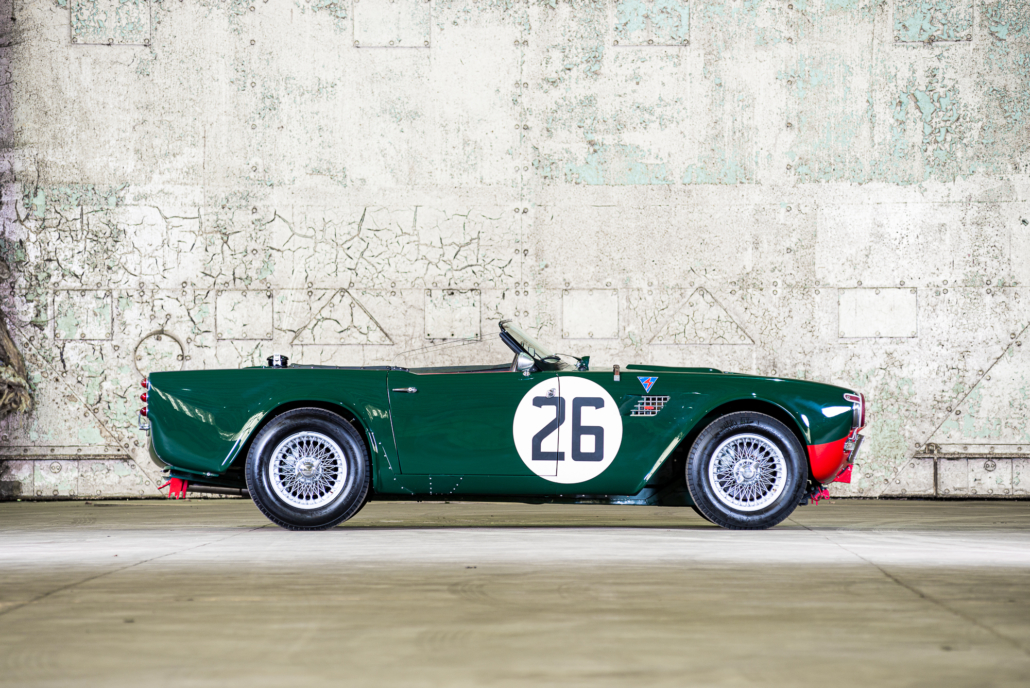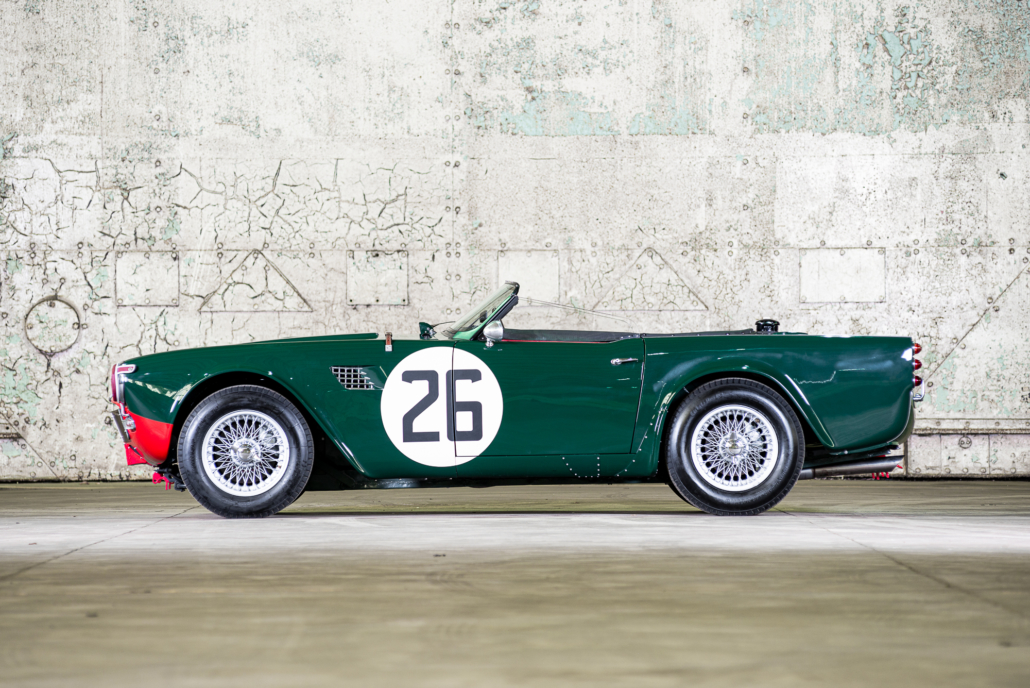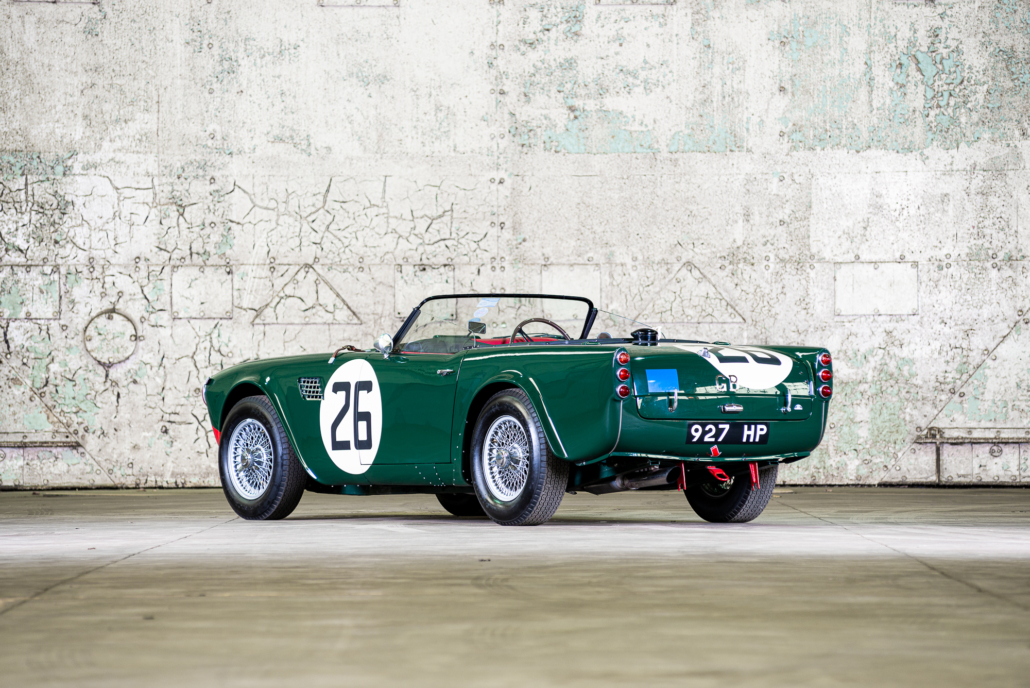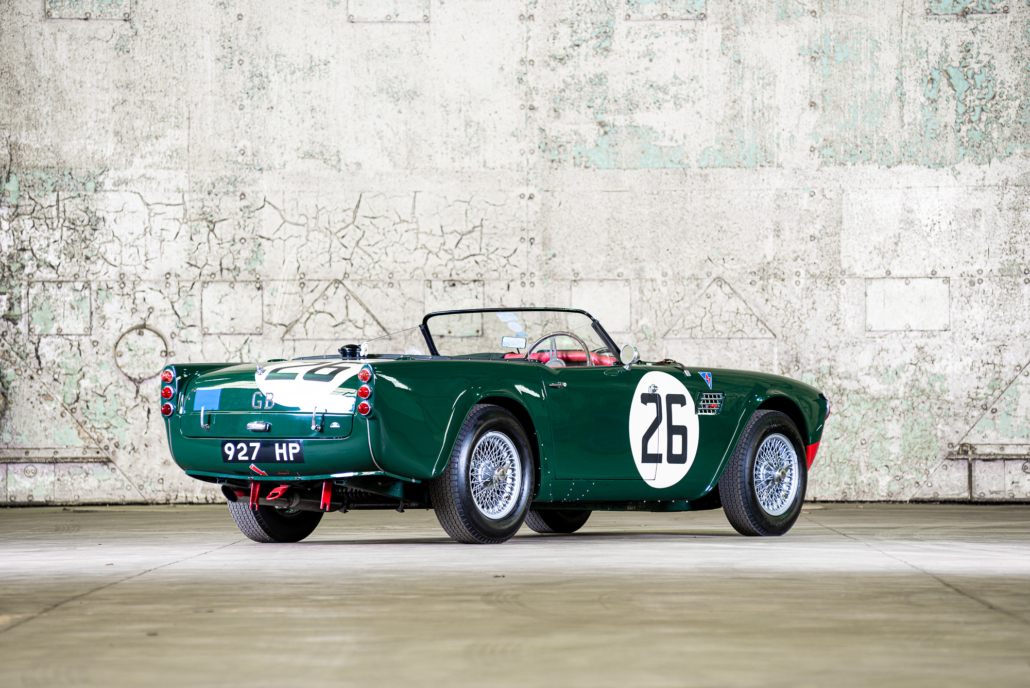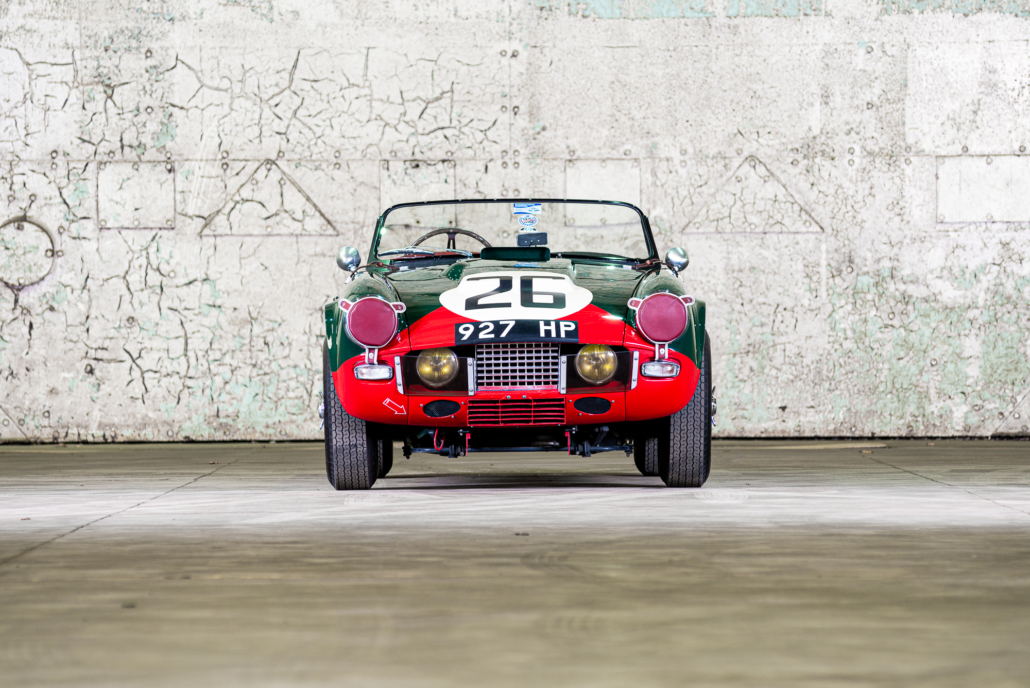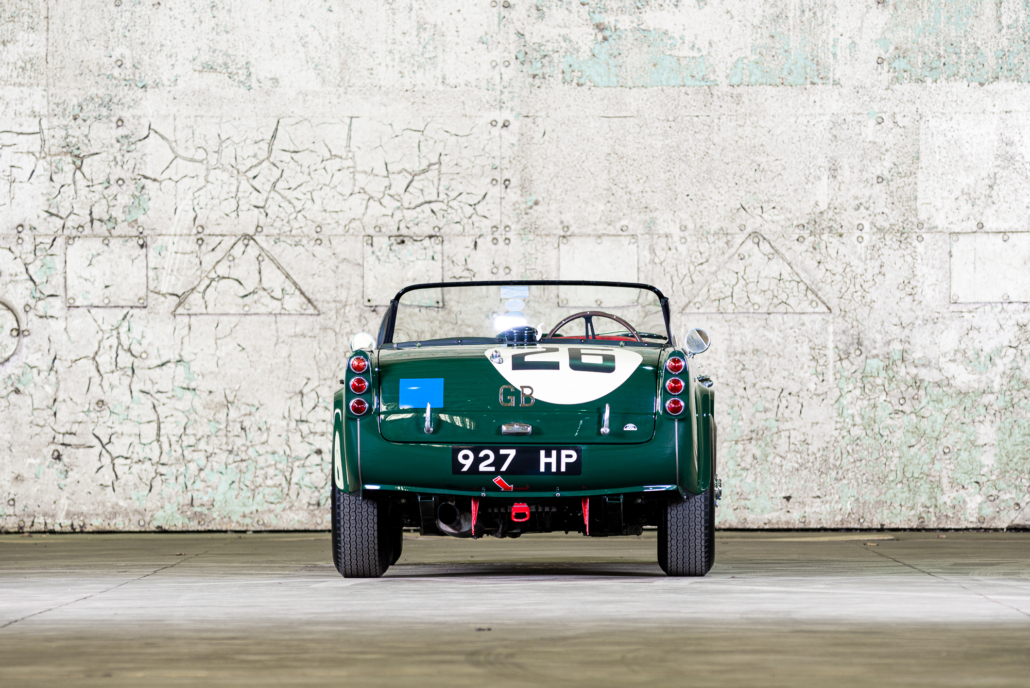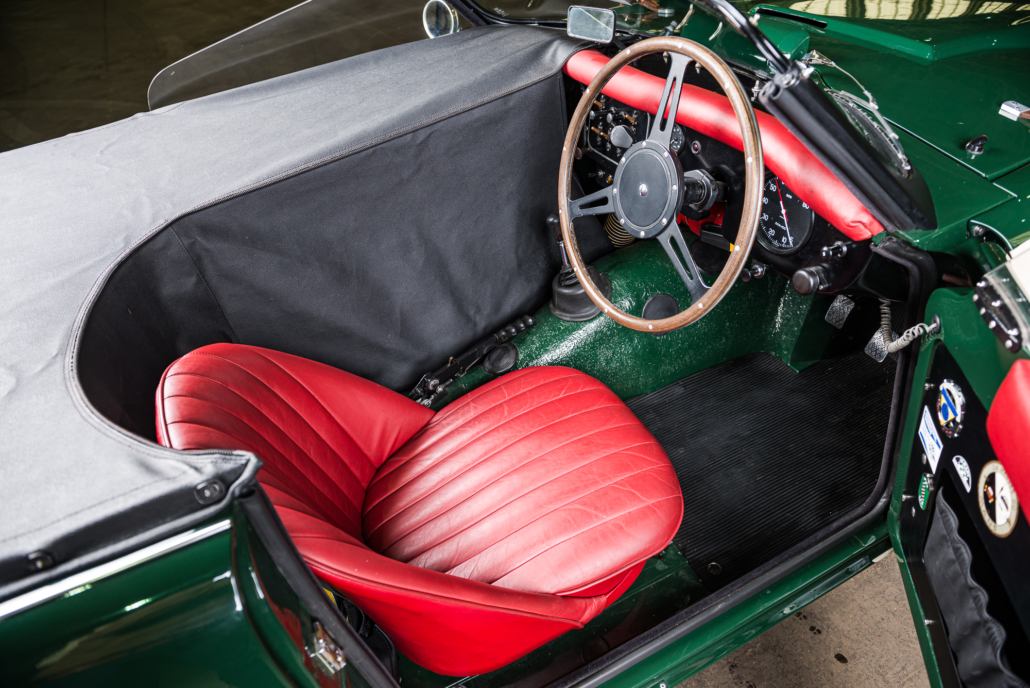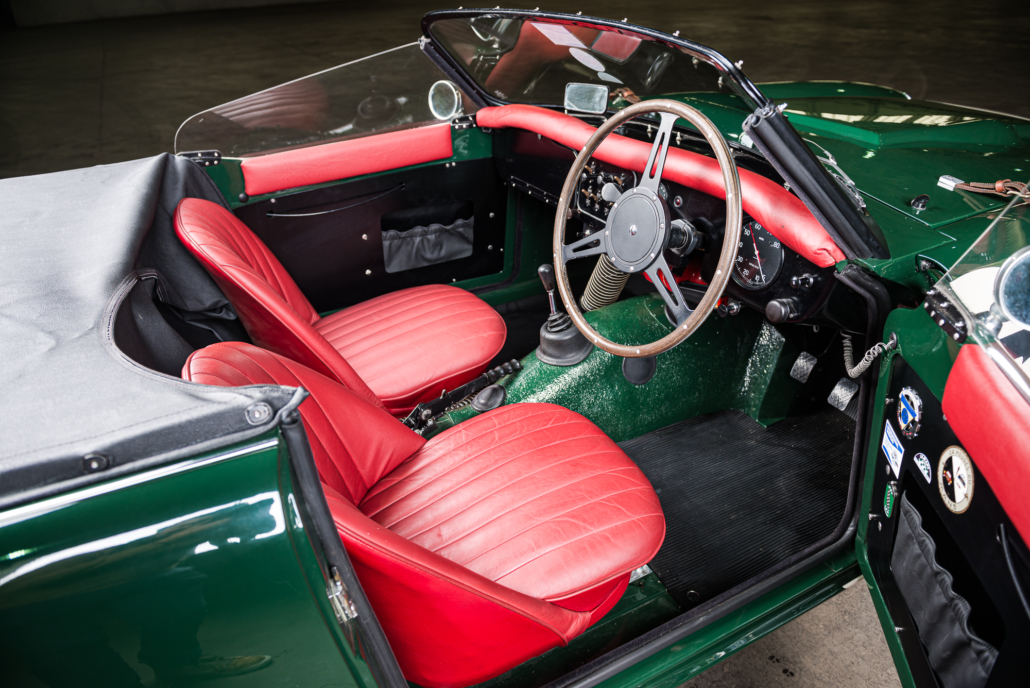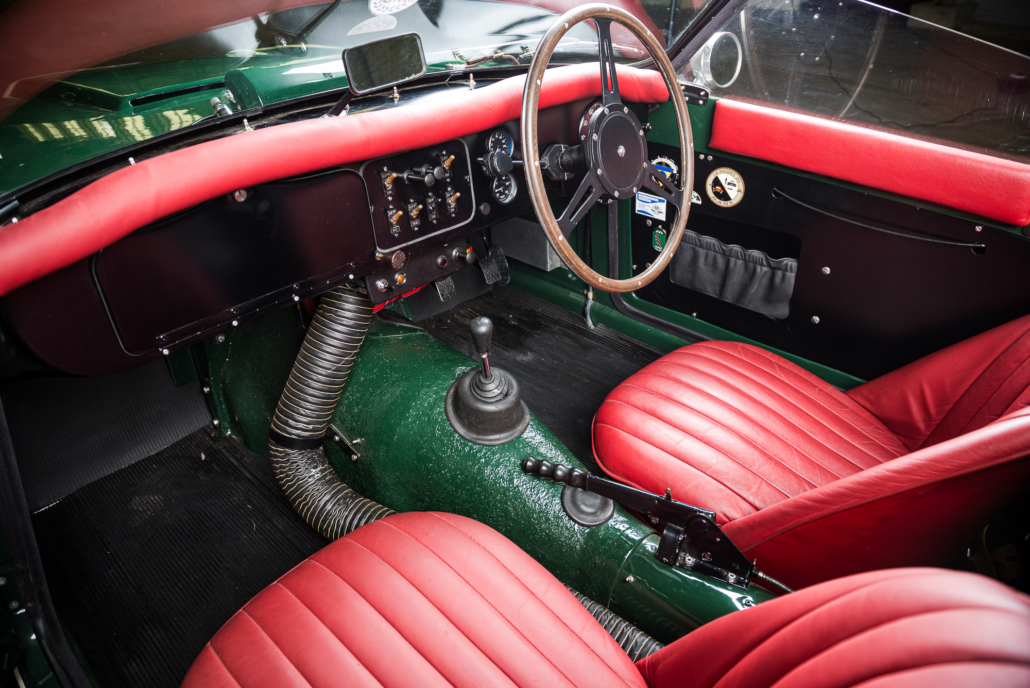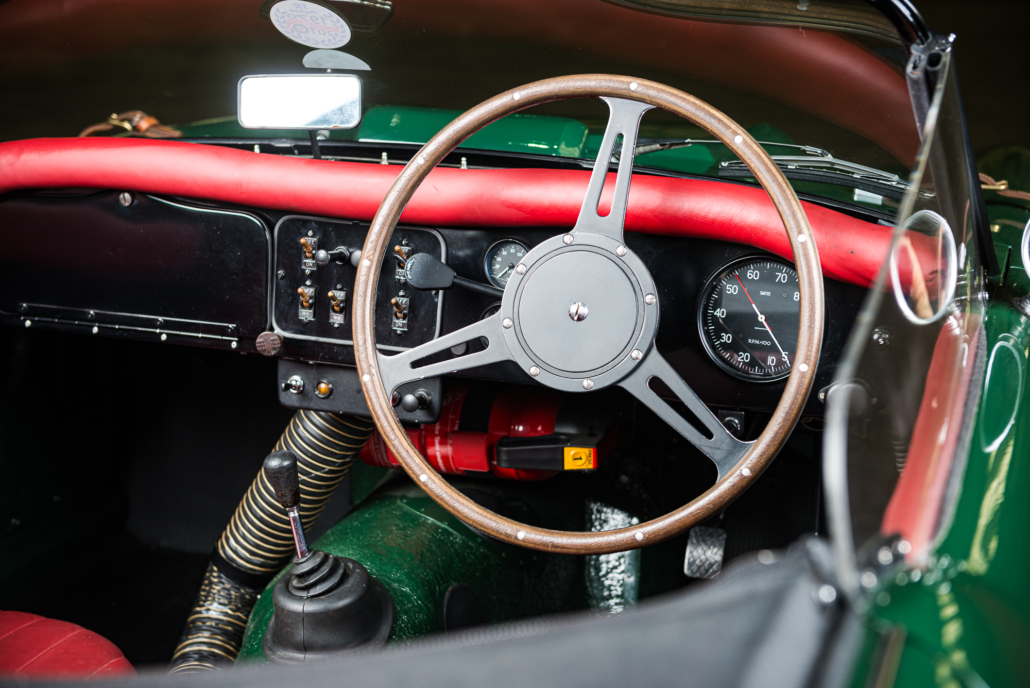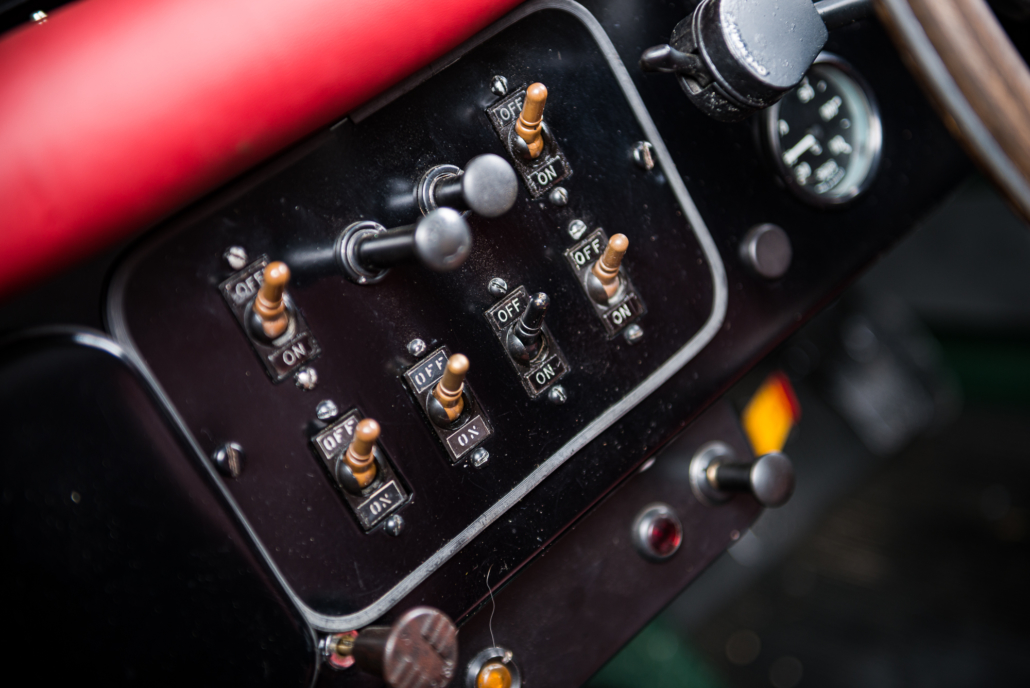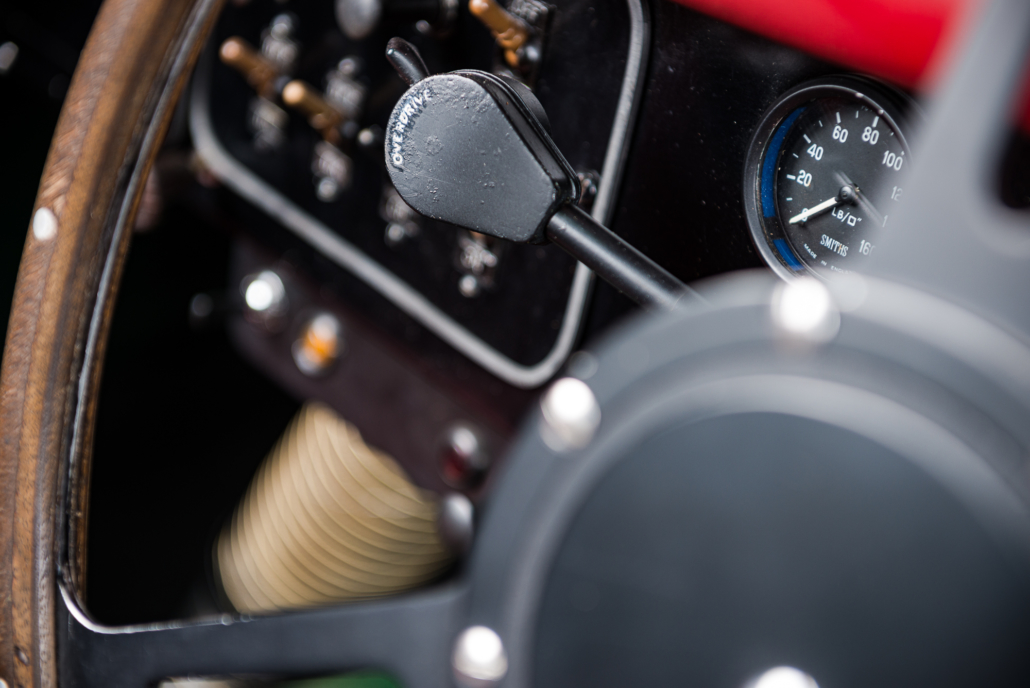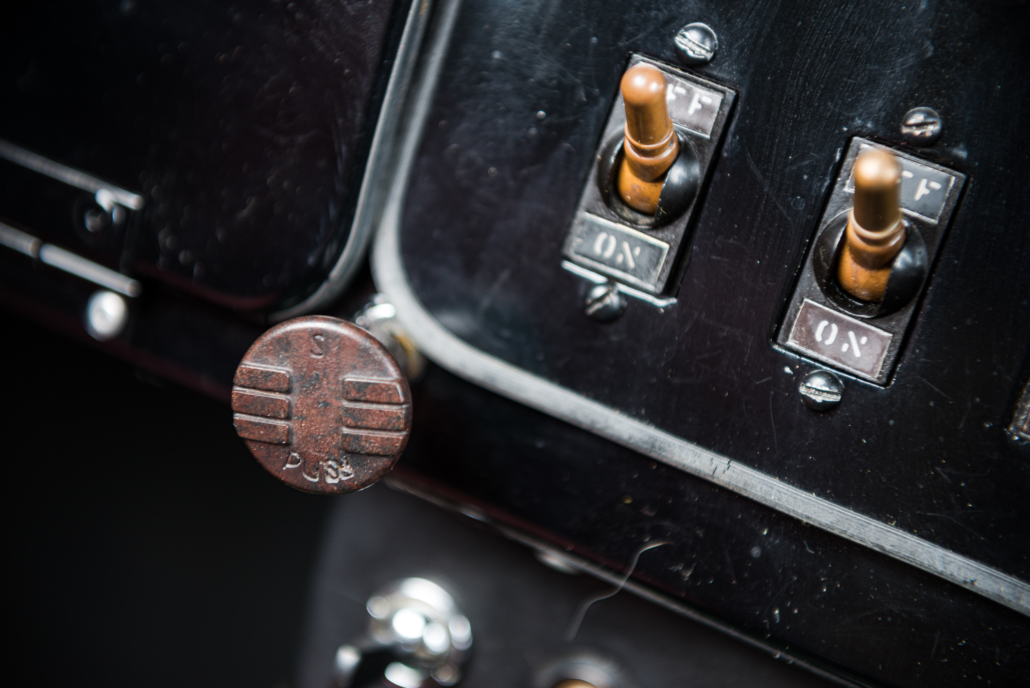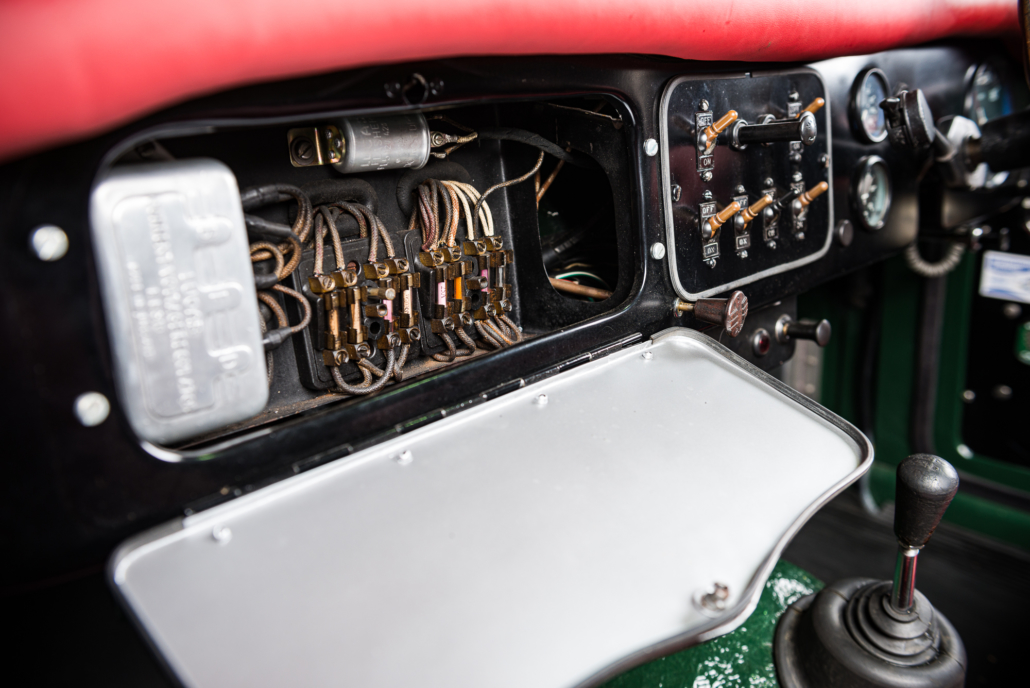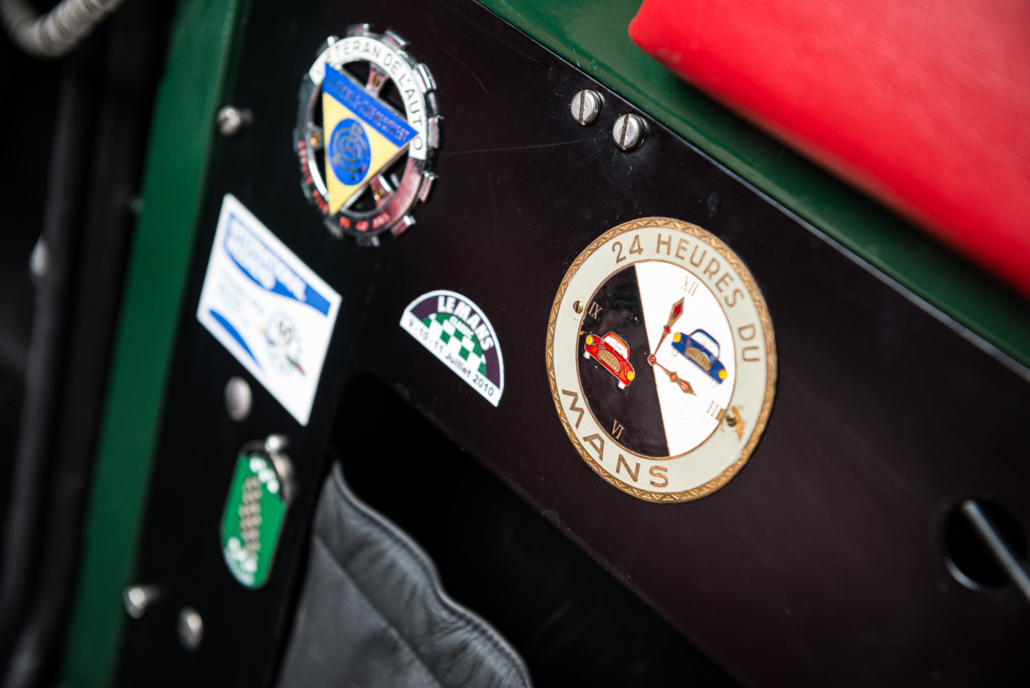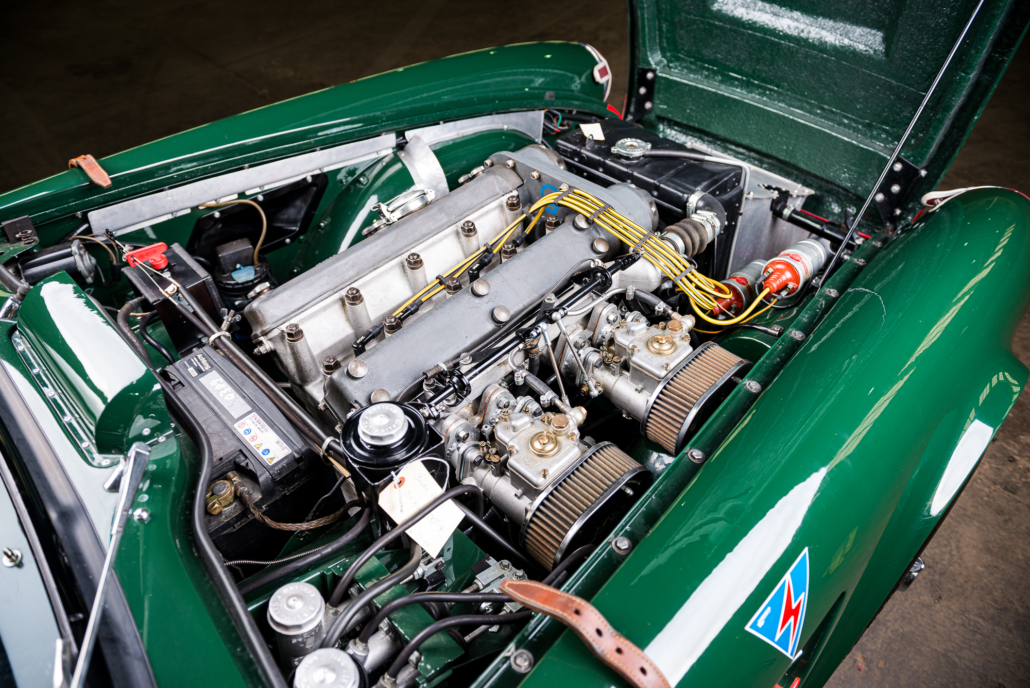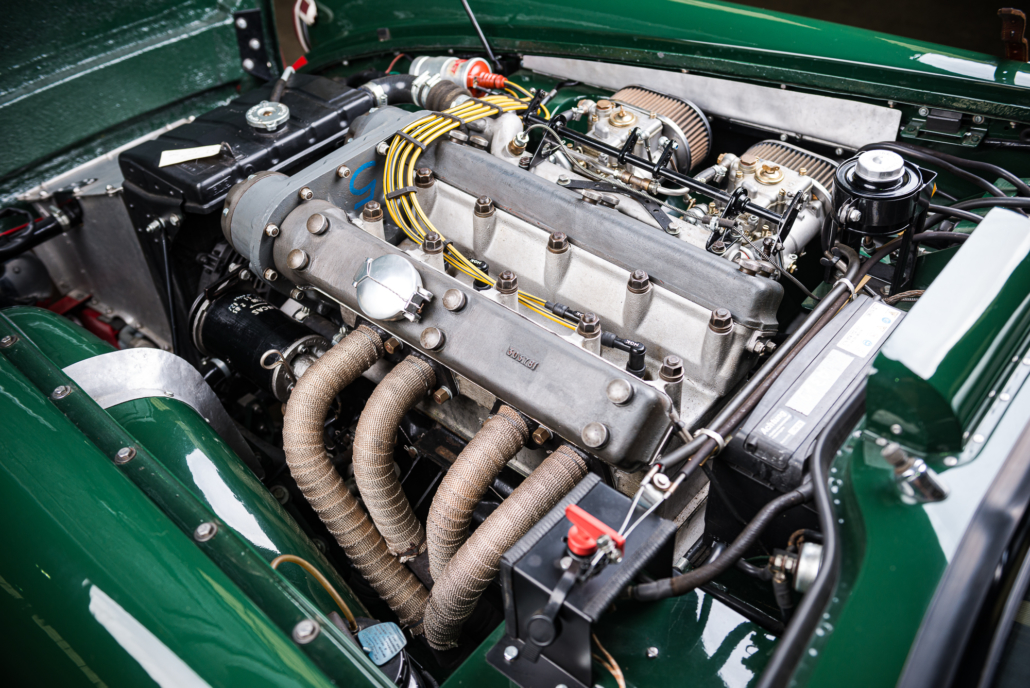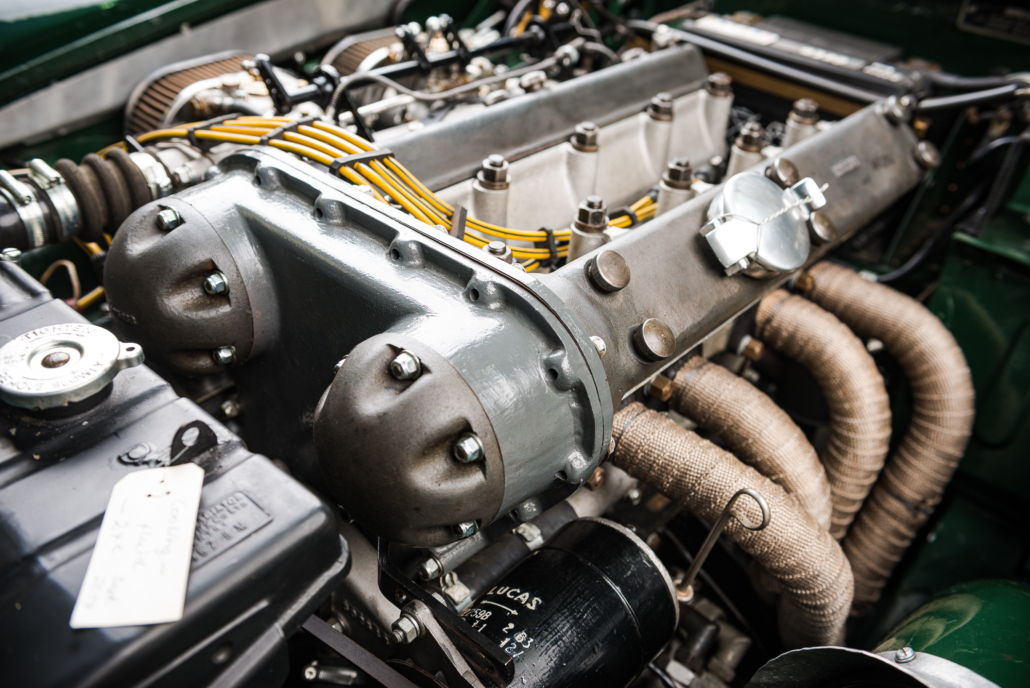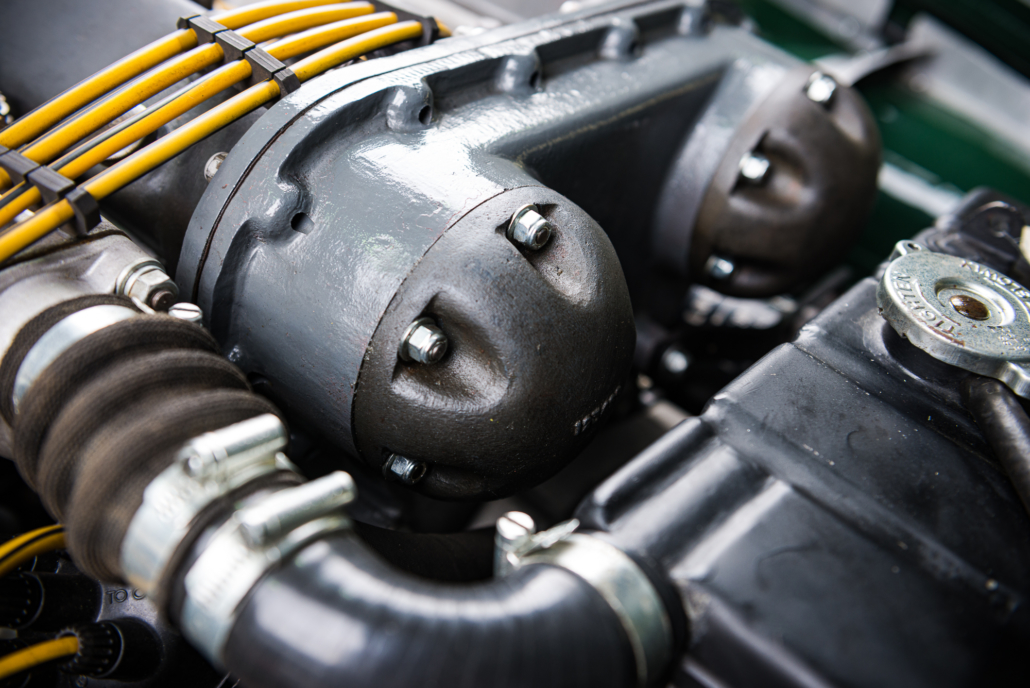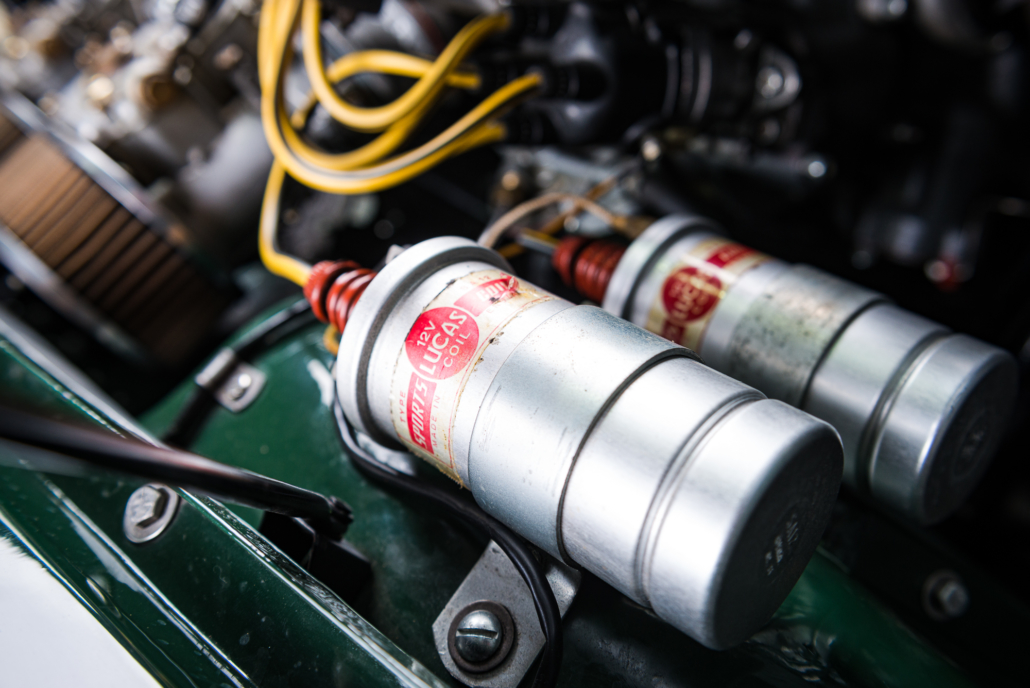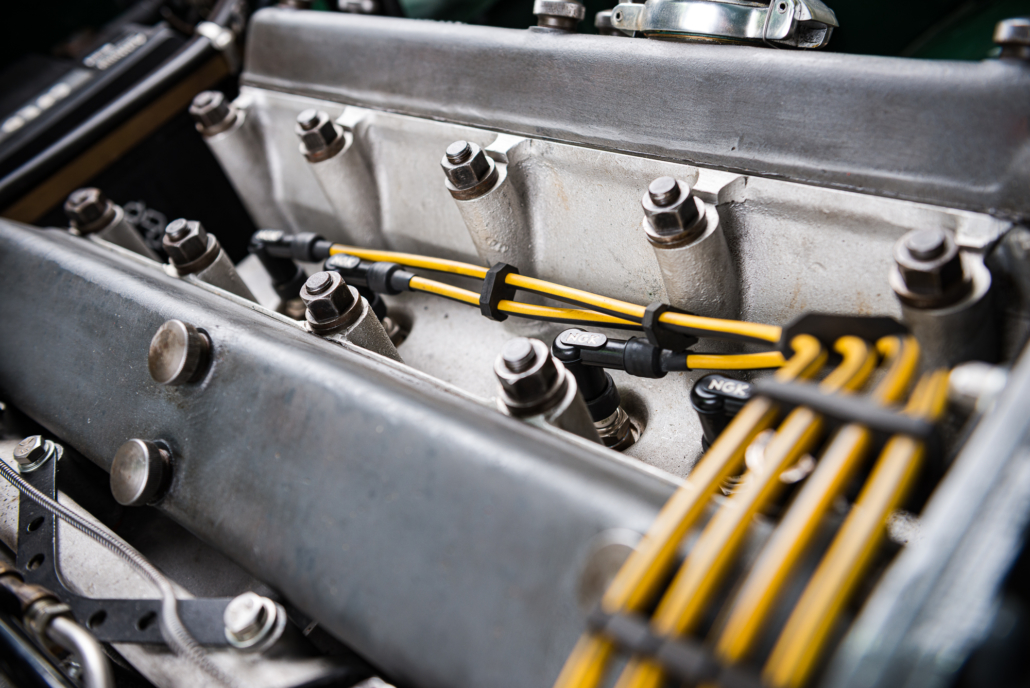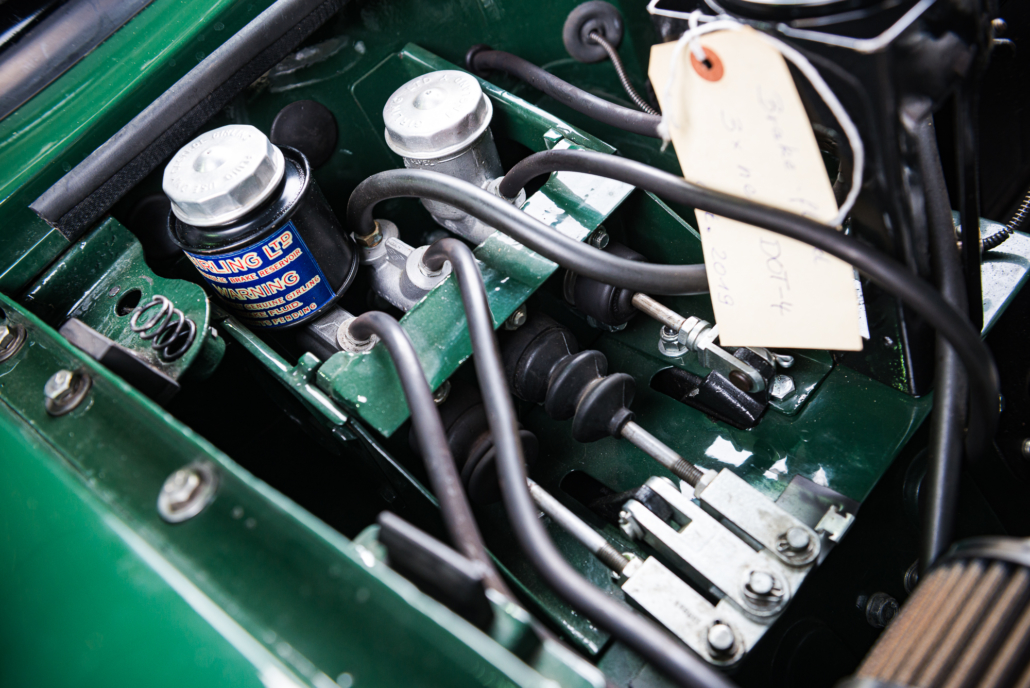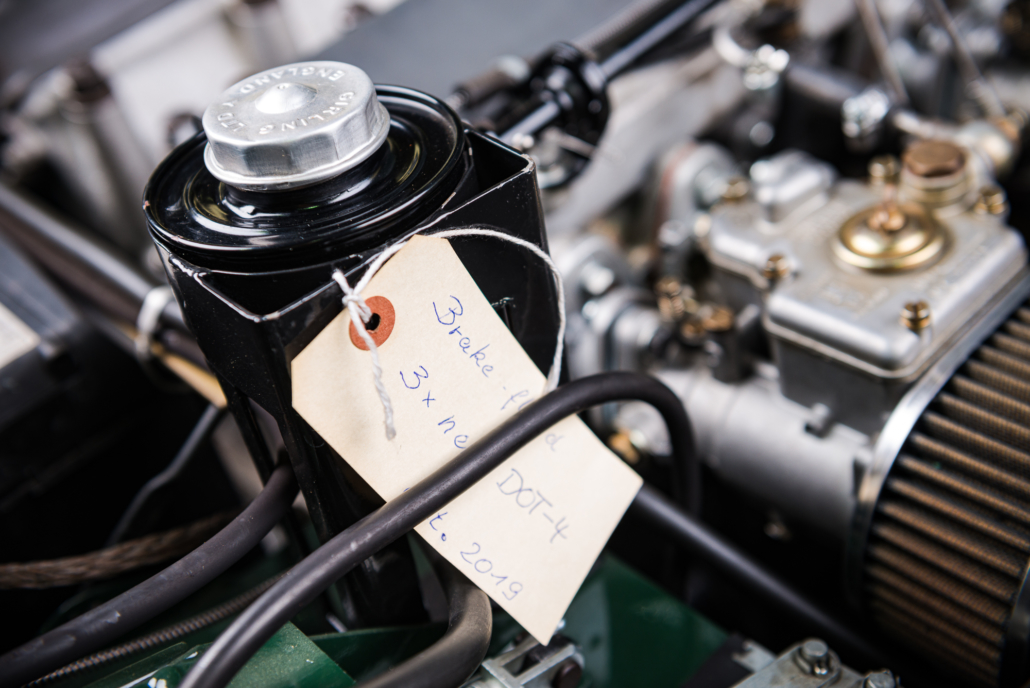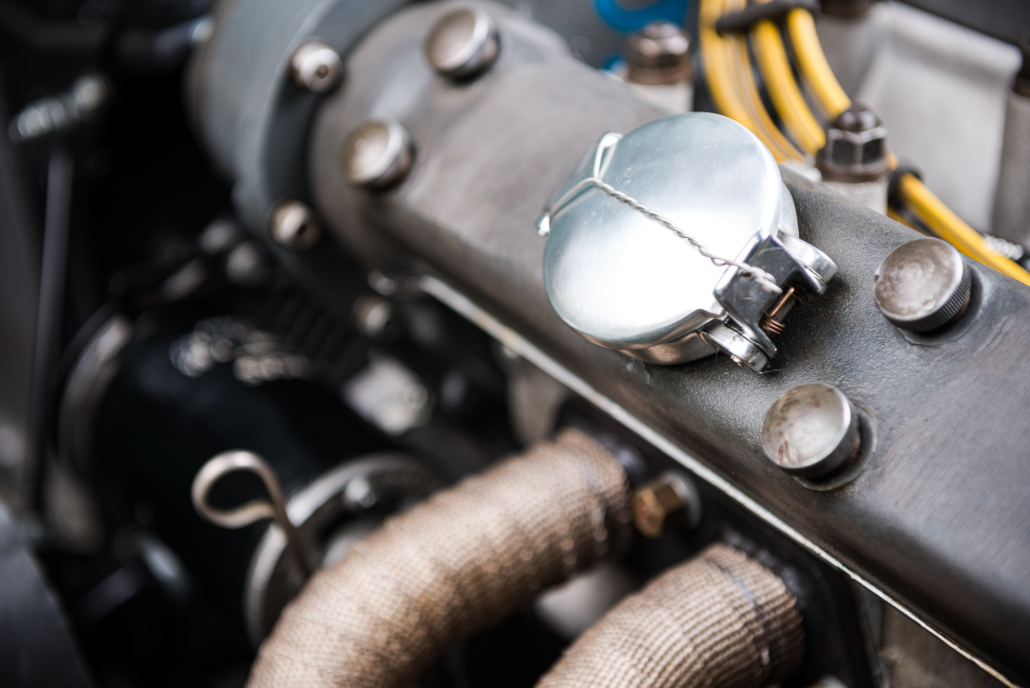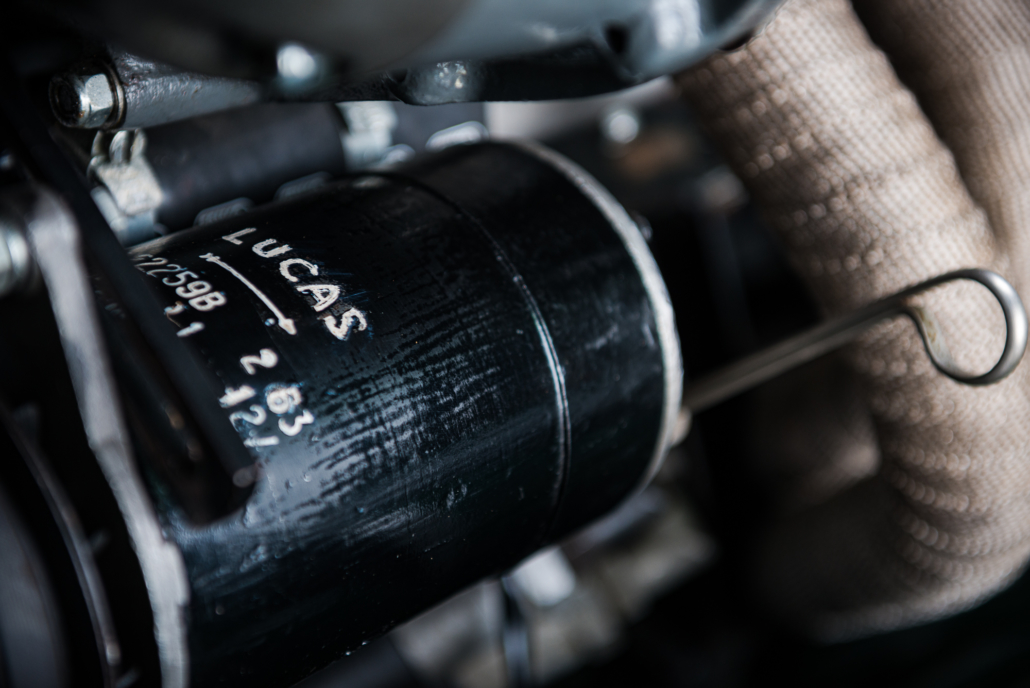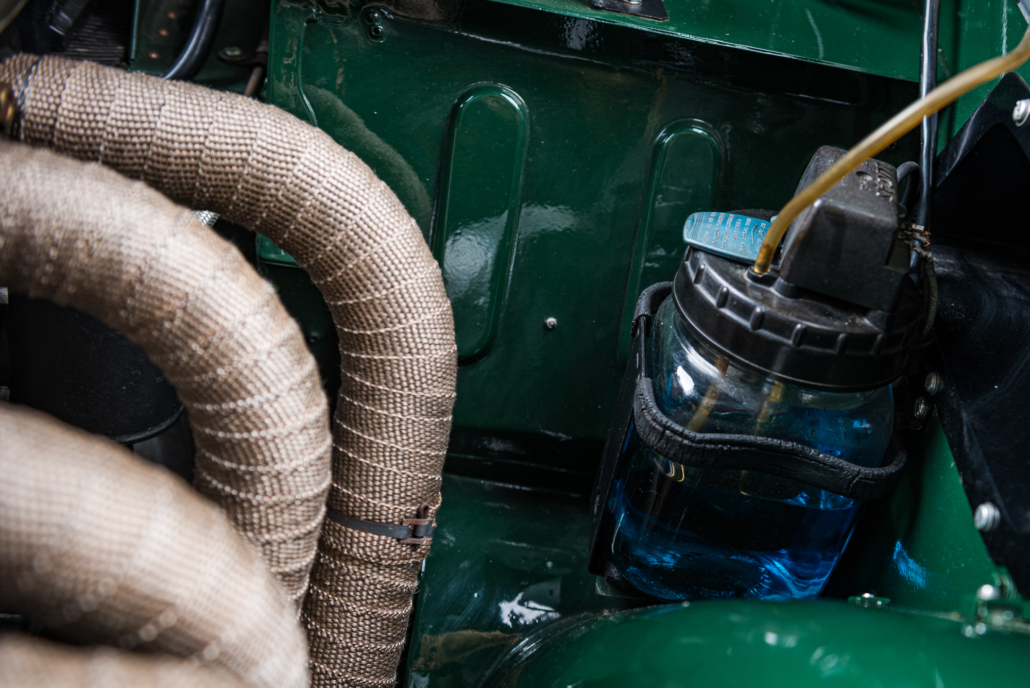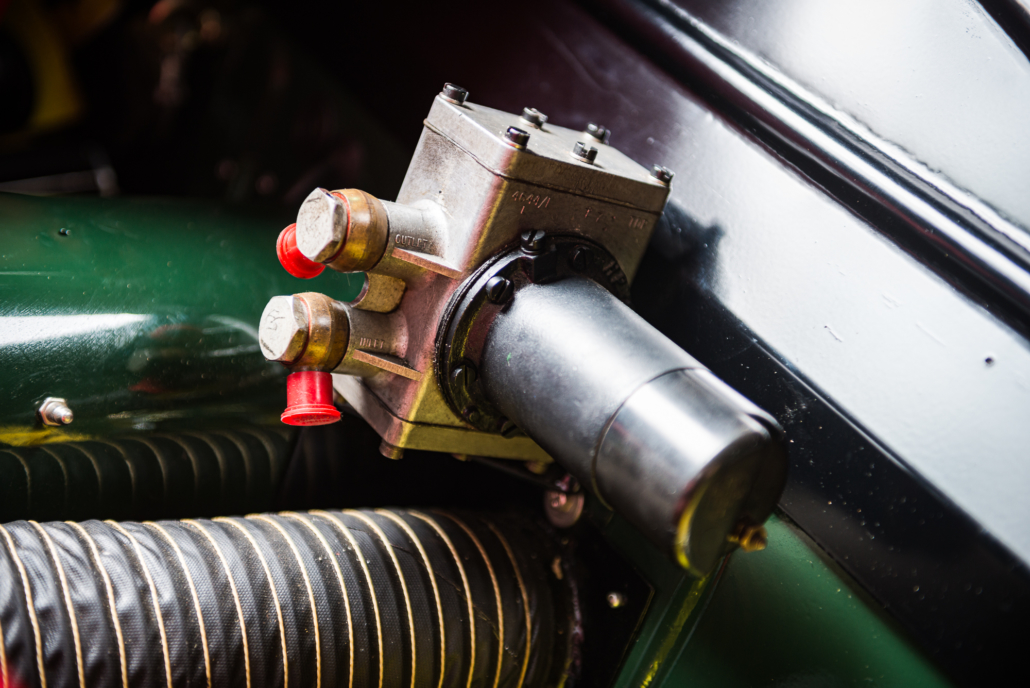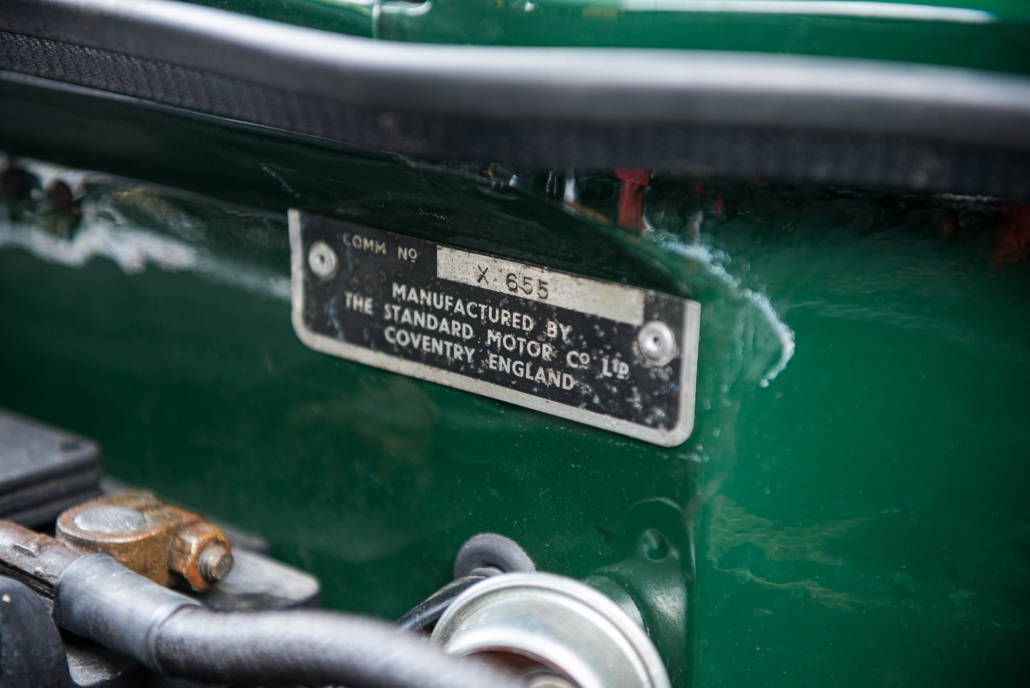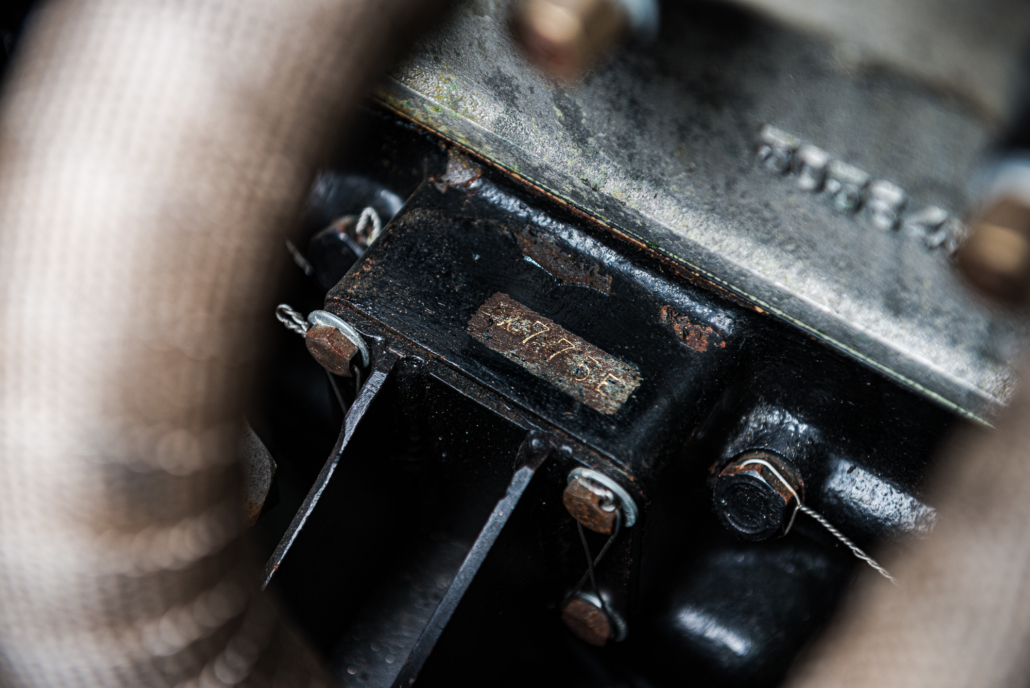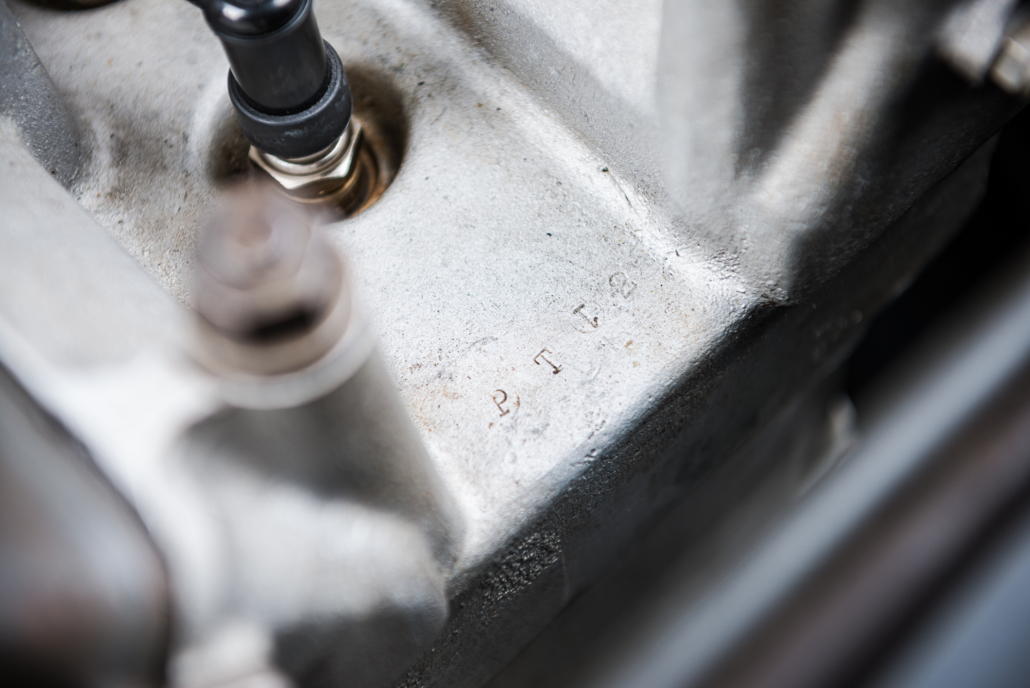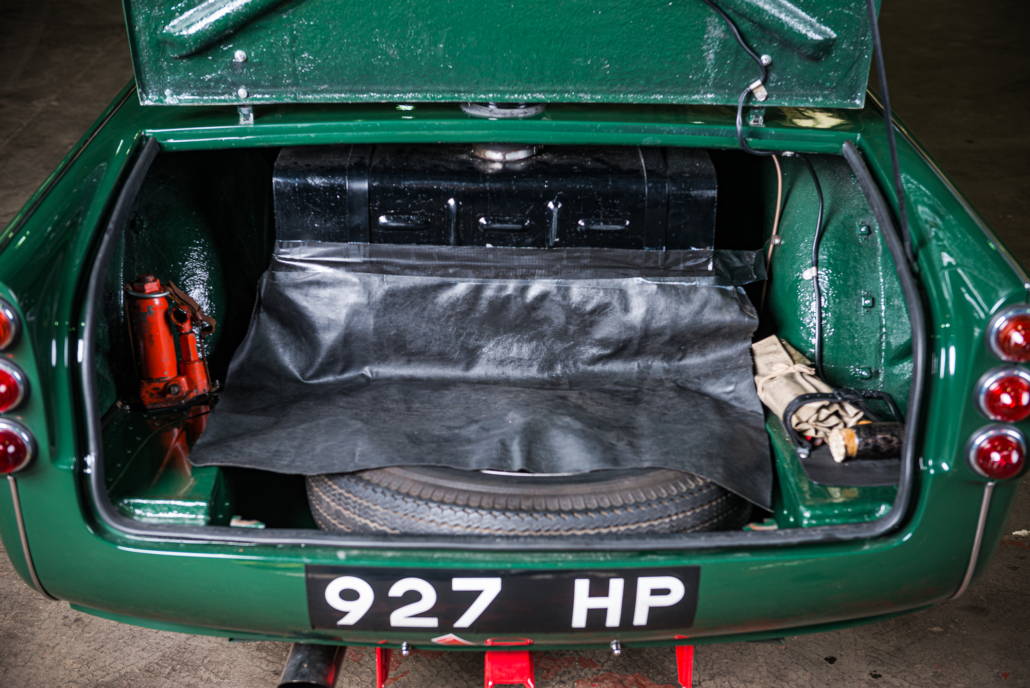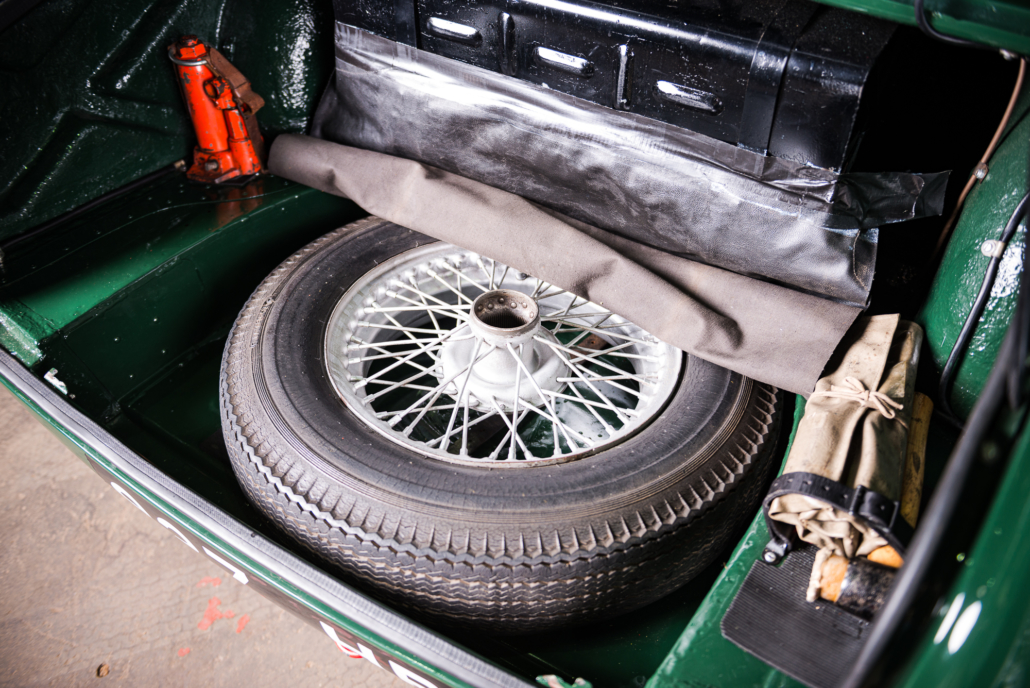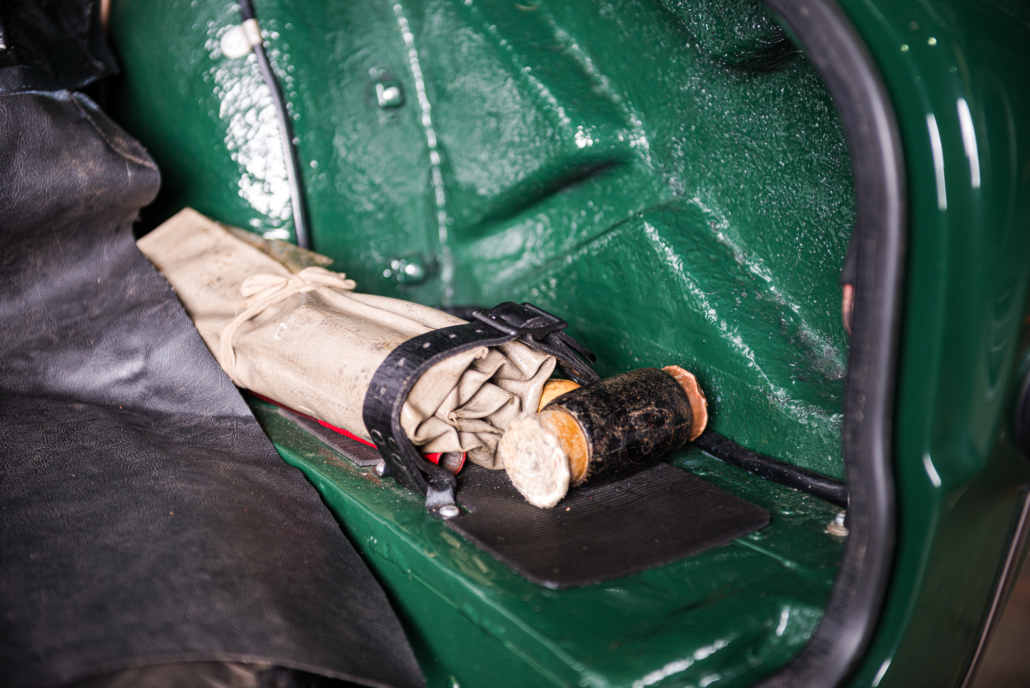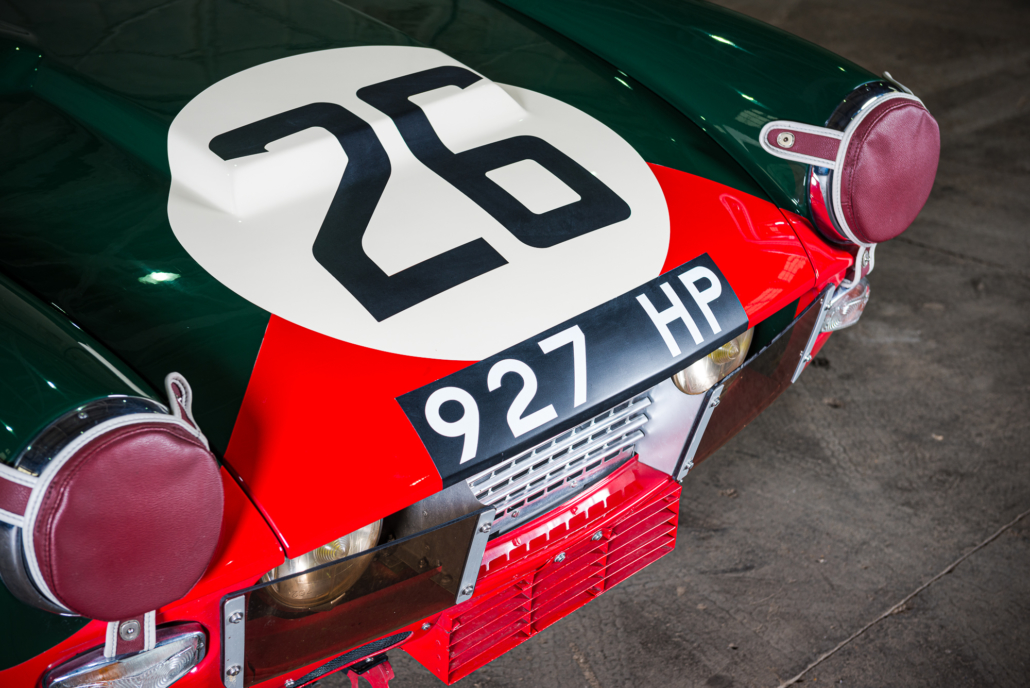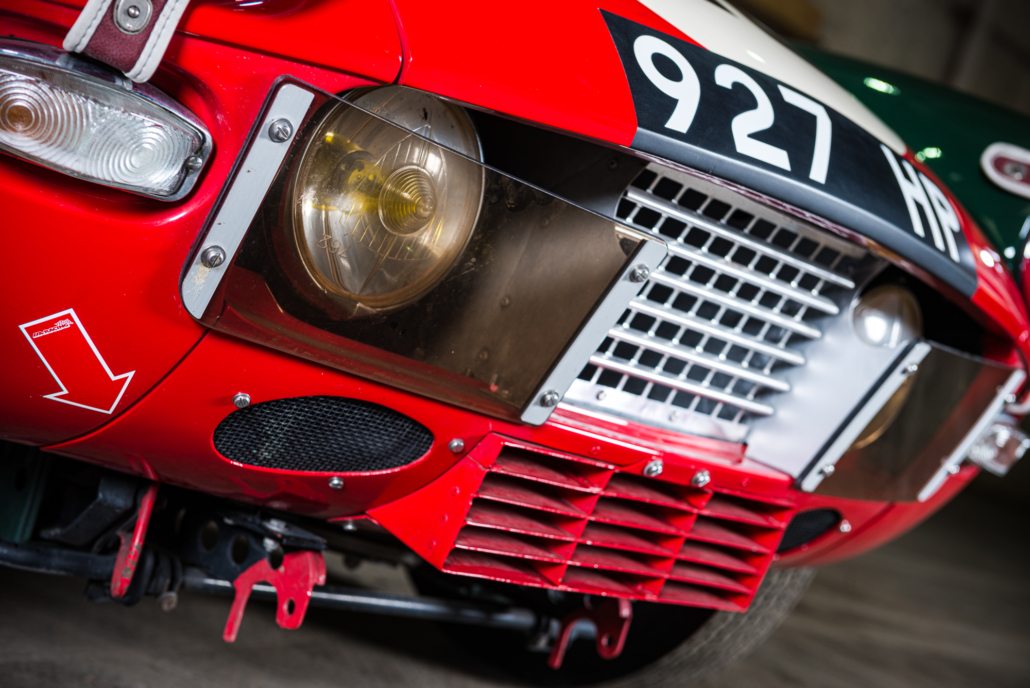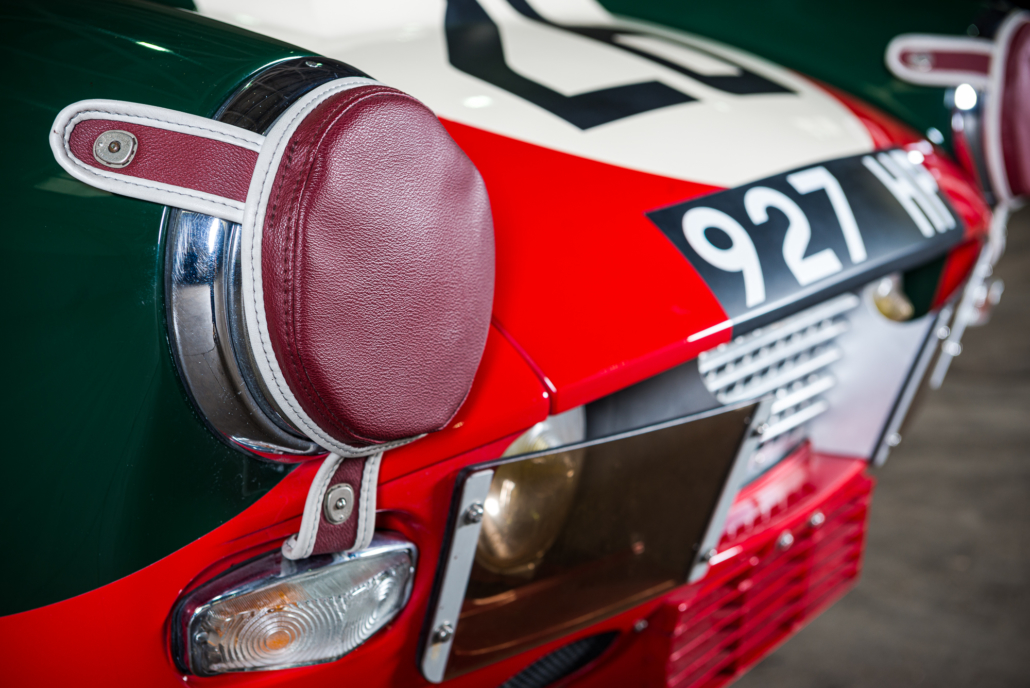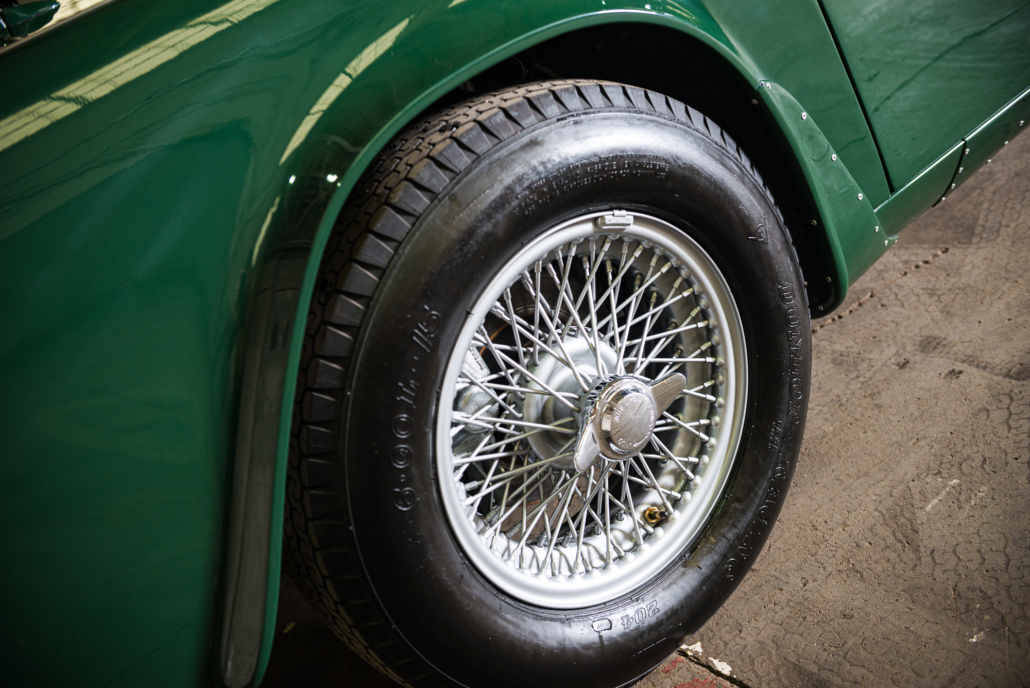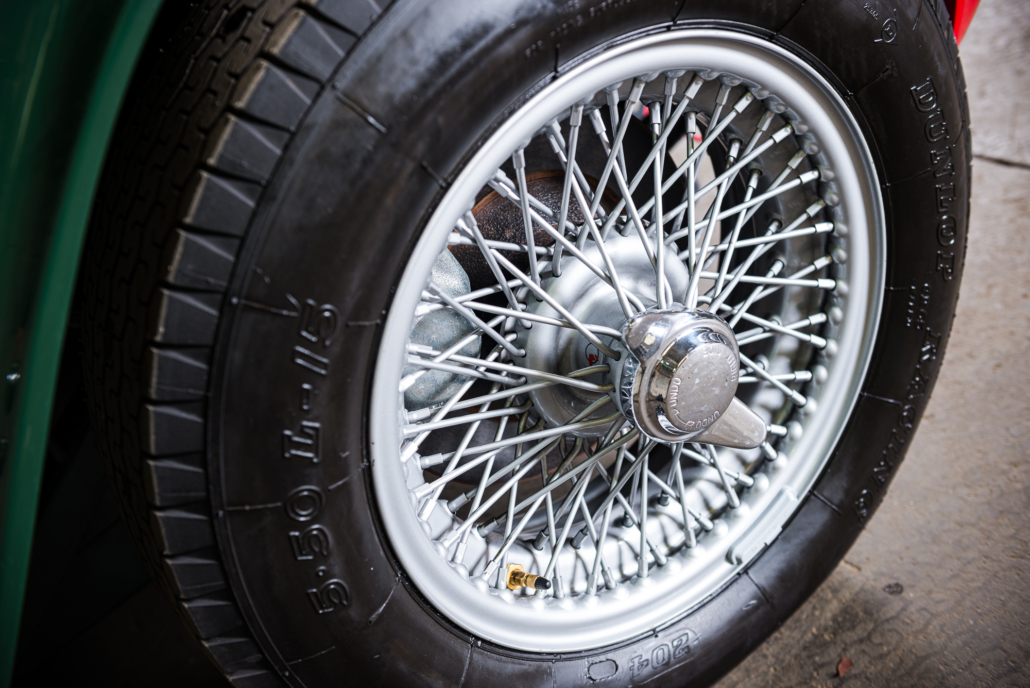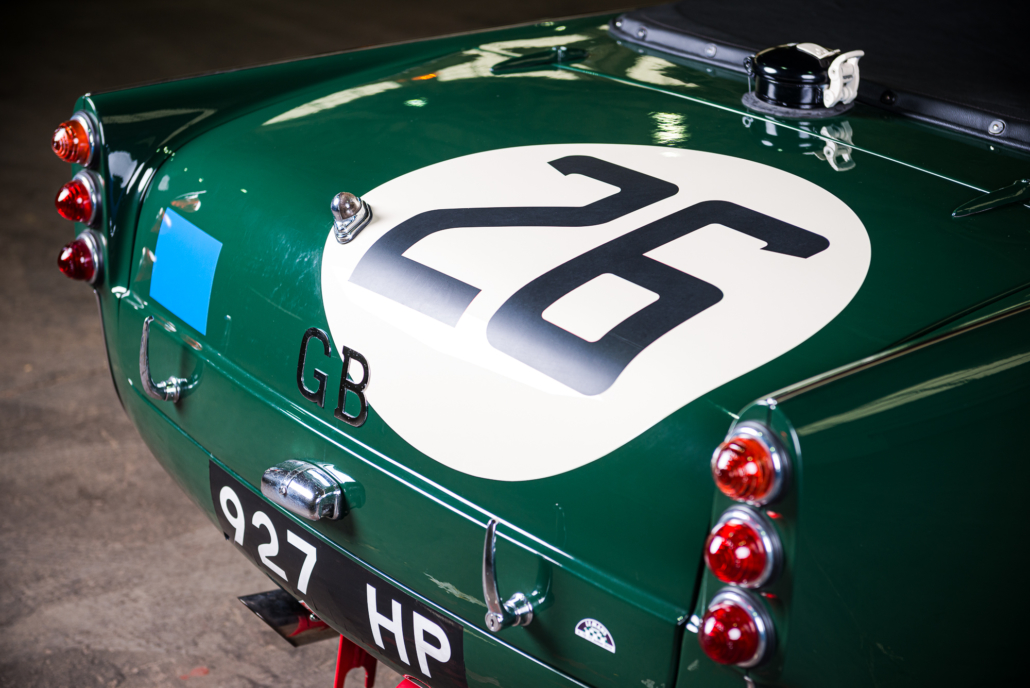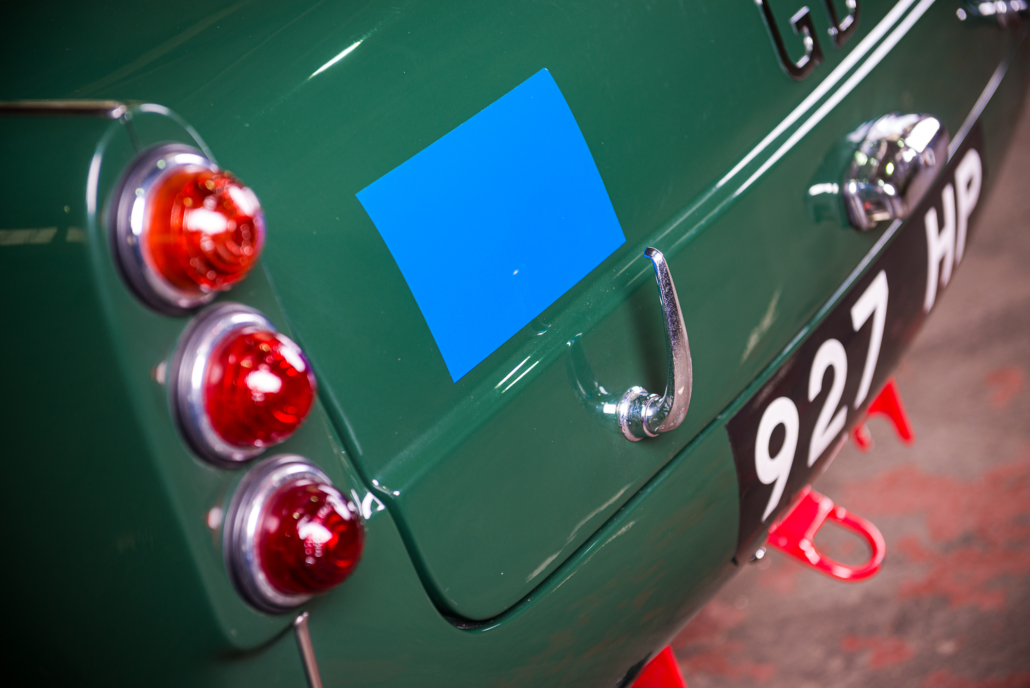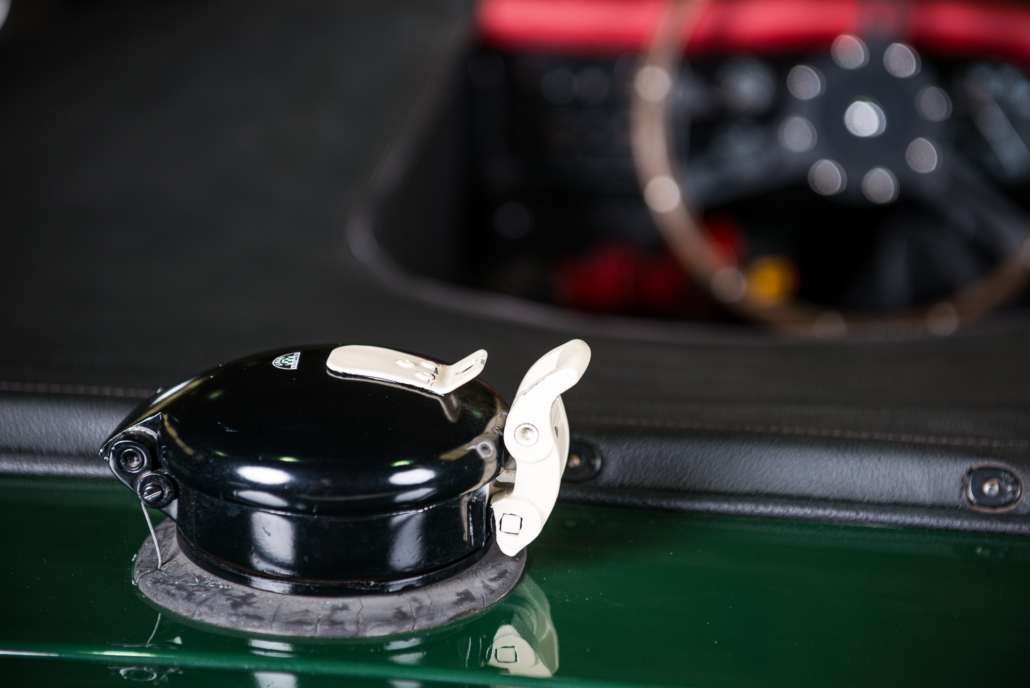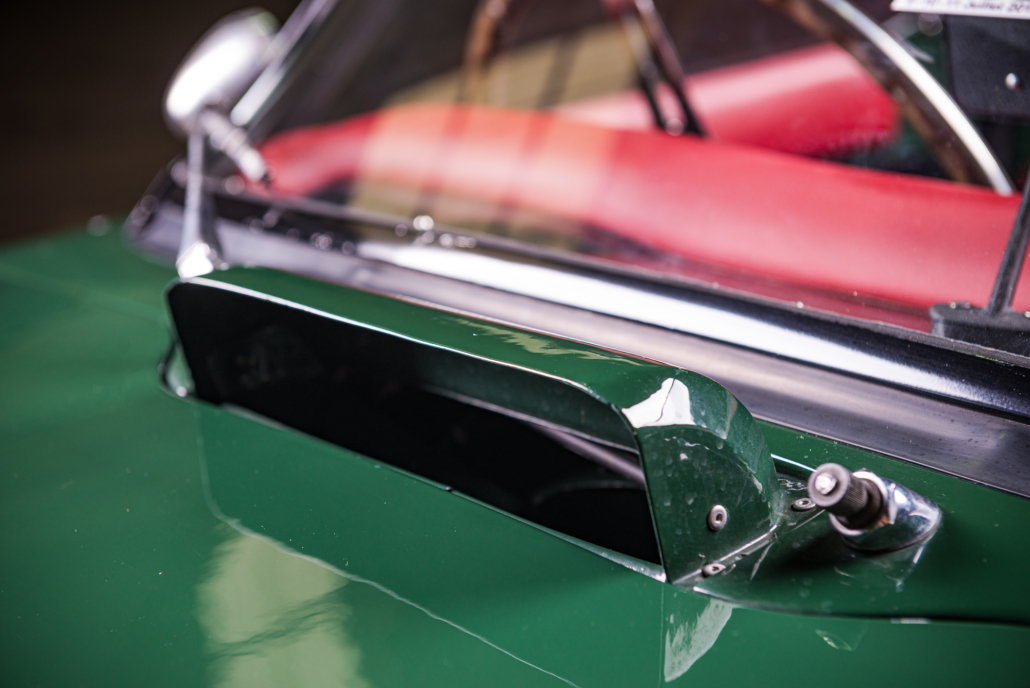In 1958 Triumph made the decision to return to Le Mans, the aim being to compete only one season later. The Competition department set out to create an entirely new car that externally resembled the production TR3. They were, however, fundamentally different cars; a 6inch longer wheel base, fibreglass panels, all-round disc brakes with the most significant change being under the bonnet. 1959 saw the introduction of the new twin cam engine, nicknamed the ‘Sabrina’.
The Sabrina engine was of an entirely new design, taking advantage of lightweight alloy castings throughout and twin choke SU Carburettors. Although it developed an impressive 150bhp it was designed so that it could perhaps become a mass produced engine. Strength and reliability were engineered in from the word go.
Despite the preparation, during the 1959 race all three cars didn’t finish. Two failed due to faulty fan blades damaging the radiators whilst an oil pump failure caused the final car to retire early. However, given the potential shown by the Le Mans cars, they were returned to Coventry and disassembled for future development. The running gear was used twelve months later as the basis of Triumph’s 1960 Le Mans onslaught with the TRS.
Four new cars were built, heavily based on modified TR3S underpinnings. The track was wider, whilst the rack and pinion steering was much like the yet to be launched TR4. The body, once again made from lightweight fibre glass, also resembled that of the design study for the forthcoming TR4.
The four new cars made their journey to Le Mans, with three set to compete. They were registered 926 HP, 927 HP and 928 HP with a fourth car being used as a spare or parts car in the event of any issues. This proved unnecessary, with the three running faultlessly and finishing 15th, 18th and 19th, only to be beaten in their class by the new twin-cam MG A. Sadly, it wasn’t to be Triumph’s year as none of the cars achieved the minimum distance required, ultimately meaning they were unclassified.
After the initial disappointment, the potential shown in the 1960 event ensured the three Le Mans TRS cars were modified for the 1961 event. That year, not only did all three cars finish the race and complete the minimum distance, but they ran almost trouble free. Finishing an impressive 9th, 11th and 15th, this result was good enough for Triumph to win the prestigious manufactures team prize.
Following the race the cars were retired from factory competition and sold via the dealer network in North America to privateers.

